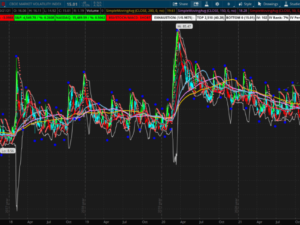
NARCOLEPSY, SYMPTOMS AND SCIENCE
Introduction
Narcolepsy is a persistent sleep disorder that is characterized by excessive sleepiness during the day and sleep-related episodes. Patients suffering from narcolepsy have difficulty staying awake. Difficult to remain awake for extended durations for long periods of time, no matter situation. Narcolepsy can cause a number of difficulties in your daily life.
The most common cause of narcolepsy is an absence of muscle tone (cataplexy) that is caused by strong emotions. Cataplexy-inducing narcolepsy is also known as the type 1 form of Narcolepsy type 1. Type 2 narcolepsy refers to that is not a cause of cataplexy.
Narcolepsy is classified into two categories:
- The most common one is Type 1. One of the signs is cataplexy, which is a an abrupt decrease in muscle strength. The drowsiness and cataplexy are due to low levels of protein known as hypocretin. (Orexin is a different name to refer to hypocretin.)
- Cataplexy is not a characteristic of the type 2 form of Narcolepsy. The levels of hypocretin in patients with type 2 narcolepsy tend to be normal.
Symptoms
The symptoms and signs of narcolepsy could get worse within the first couple of years. However, they’ll continue for the rest duration of the life. These are:
Drooling all day. People suffering from narcolepsy be asleep at odd time and locations. For instance, you could you are working or talking with your friends and are asleep for just up to one-half hour. If you awake, you’re rejuvenate, but soon go back to sleep. Modalert and Modvigil tablets can assist in this regard.
Through the day, you could observe a decrease in your attentiveness and focus. Drooling throughout the day is usually the first sign of a problem and can be the most irritating that makes it difficult to concentrate and function normally.
Common Symptoms
- Sleep disturbances
The patients with the illness can have difficulties sleeping in the evening, only to be afflicted with uncontrollable periods of somnolence during the daytime. Patients with narcolepsy don’t rest more than they do, however, their sleep patterns are erratic and fluctuating during the day and at night.
- Excessive daytime sleepiness
EDS the term use to describe excessive Daytime Sleepiness, is the most common narcolepsy symptom and is closely associate with exhaustion. EDS is an on-going feeling of fatigue which causes poor focus and fatigue. It could be interrupt by a few moments that are “micro sleep,” in which individuals fall asleep for a brief amount of time, without even realizing that they are asleep, and may not interrupt their work like writing or driving.
Muscle tone suddenly gone.
Cataplexy (KAT-uh-plea-see) can be describe as a condition that can trigger different bodily disorders which can range from slurred speech up to muscle weakness. It can be present for as long as a couple of minutes.
There are many kinds of cataplexy. These include exhilaration and laughter, as well as terror, excitement and fury. When you are laughing, your head could fall out of control or your knees could fall over in a sudden manner.
Certain people suffering from narcolepsy might experience a few episodes of cataplexy throughout the year, while others may experience several episodes per day. Cataplexy is not the sole manifestation of narcolepsy for everyone.
While Sleeping
Patients suffering from narcolepsy usually have issues speaking or moving when they fall asleep or wake up. These episodes are usually brief (a couple of moments or even minutes) but they can be frightening. Although you didn’t have any influence on what happened but you could be aware of what happened and not have any trouble recalling it later on.
This type of paralysis during sleep is comparable to intermittent paralysis that can occur in the rapid movement of your eyes (REM) asleep. The immobility of REM sleep can prevent the body’s ability to carry out the dream-like activities.
Narcolepsy doesn’t always cause sleep paralysis. Many people who do not have narcolepsy suffer from periods that cause sleep paralysis.
Fast eye movement (REM)
In REM sleep the majority of dreams take place. For those suffering from narcolepsy REM sleep can occur anytime during the day. Narcolepsy sufferers typically go into REM sleep rapidly, typically within 15 minutes of having fallen asleep.
Hallucinations
Since you may not be asleep completely when you start dreaming and seeing your dreams as real these hallucinations can be frightening and vivid. Hallucinations that are hypnagogic are hallucinations that are caused by sleep. Hypnopompic hallucinations are hallucinations that are induced by waking and waking. If this happens, you may have the impression that someone else is in your room.
Sodium Oxybate
Xyrem is approve by the FDA as the only treatment for cataplexy and excessive sleepiness. However, there are advantages and disadvantages to talking to your physician about it. Nausea, dehydration and sadness are all possible adverse negative effects.
The pitolisant type is know as the Wakix (pitolisant). Narcolepsy was recently accept for therapy by FDA. In releasing histamines to the brain Wakix helps to reduce drowsiness throughout the daytime. Alongside nausea and headaches and vomiting, the other potential adverse effects are insomnia and anxiety. To treat it, you can use Modalert 200 or Modvigil 200.
Treatment options for Narcolepsy
Narcolepsy is a chronic sleep disorder that can last for a long time. Treatments can help you to manage your symptoms, even if there’s no cure.
This condition can be control through medication, lifestyle modifications and by avoiding hazardous activities.
There are a myriad of treatments for the condition, which includes:
Stimulants
Armodafinil (Nuvigil), modafinil (Provigil) and Methylphenidate are among them (Ritalin). This drug has a number of adverse consequences, including headaches, nausea, and anxiety. The three can all keep you alert.
Inhibitors of serotonin-norepinephrine reuptake
Some of the side effects are digestive problems insomnia, sleeplessness, and weight growth. Venlafaxine (Effexor) is a treatment for hallucinations, cataplexy, or sleep paralysis.
In SSRIs serotonin is block from being absorb (SSRIs). You might also be able to have a better sleep and feel more relaxed in the event that you take an SSRI like the fluoxetine (Prozac). It is possible to experience light-headedness and dry mouth, however.
Tricyclic antidepressants
Nortriptyline and amitriptyline are just two of them. Sleep paralysis, cataplexy, and hallucinations can be reduce. Dry mouth, constipation, and retention of urine are potential adverse side effects from these older medications.
Sodium oxybate
The FDA has granted Xyrem approval as the only treatment for cataplexy and extreme morning drowsiness. It would be helpful by discussing the benefits and drawbacks of this medication with your physician. In addition to sadness, nausea or thirst there could be many other potential adverse negative effects.
Pitolisant
Wakix releases histamines in the brain, which reduces the amount of sleepiness that occurs during the day. The FDA just granted it approval as a treatment for the condition known as narcolepsy. There are a variety of side effects that can occur like nausea, headaches as well as anxiety and insomnia.
Conclusion
Narcolepsy-related issues aren’t easy to deal with. Drowsiness that is excessive can be distressing and can lead to cause harm to yourself or others suffering from it. However, you are able to manage the issue. It is possible to maintain your health by obtaining the correct diagnosis by working with your physician to find the right treatment to treat you and adhering to the guidelines mentioned above. Modalert, Modalert 200, Modvigil, Modvigil 200, and Modalert 200 Australia tablets can aid with this.














